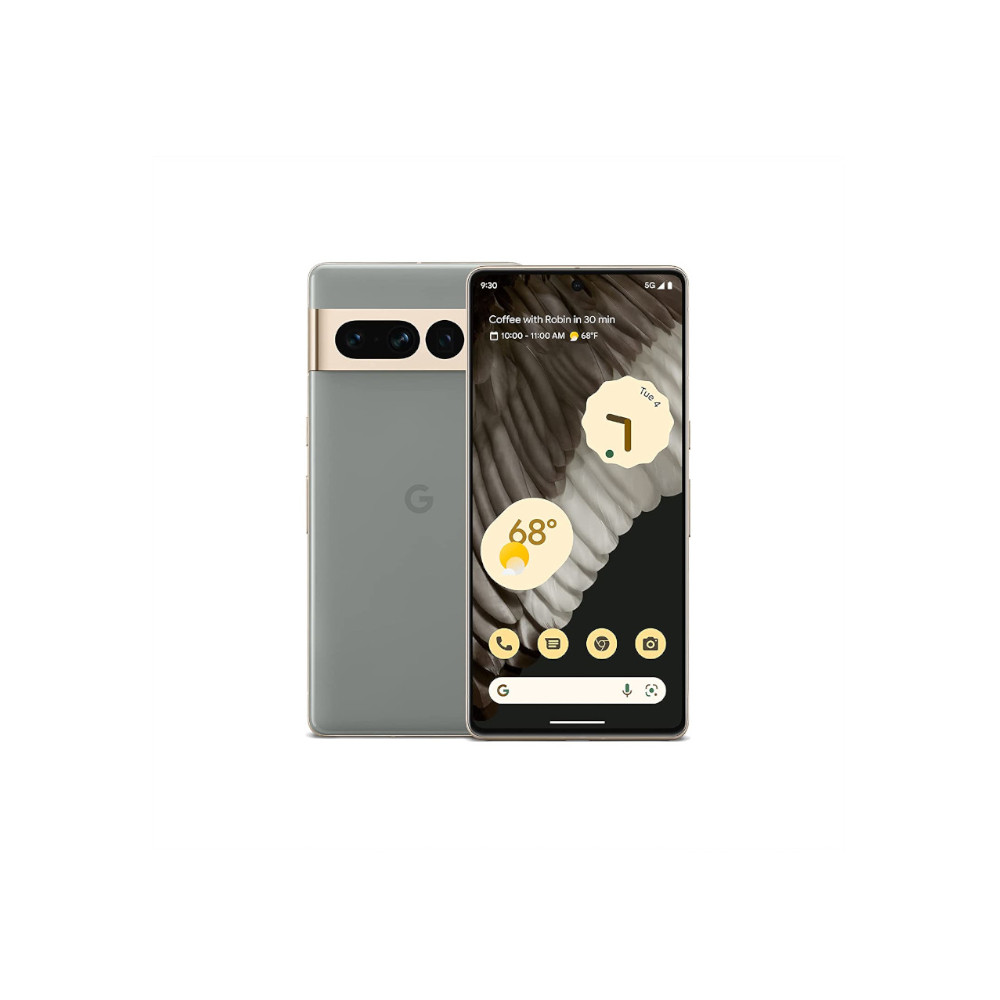Affiliate links on Android Authority may earn us a commission. Learn more.
Google Pixel 7a specs: Does it live up to the hype?
Published onJune 16, 2023
Google’s budget Pixel smartphones offer one of the best no-frills smartphone experiences along with some cool exclusive features that you won’t find anywhere else. The company has now released the Pixel 7a, and it looks like a big upgrade over the previous generation. So without wasting any time, here’s everything you need to know about the Google Pixel 7a specs sheet and how the phone stacks up against the competition. If you’re looking for more in-depth coverage, we’ve also published our full Pixel 7a review.
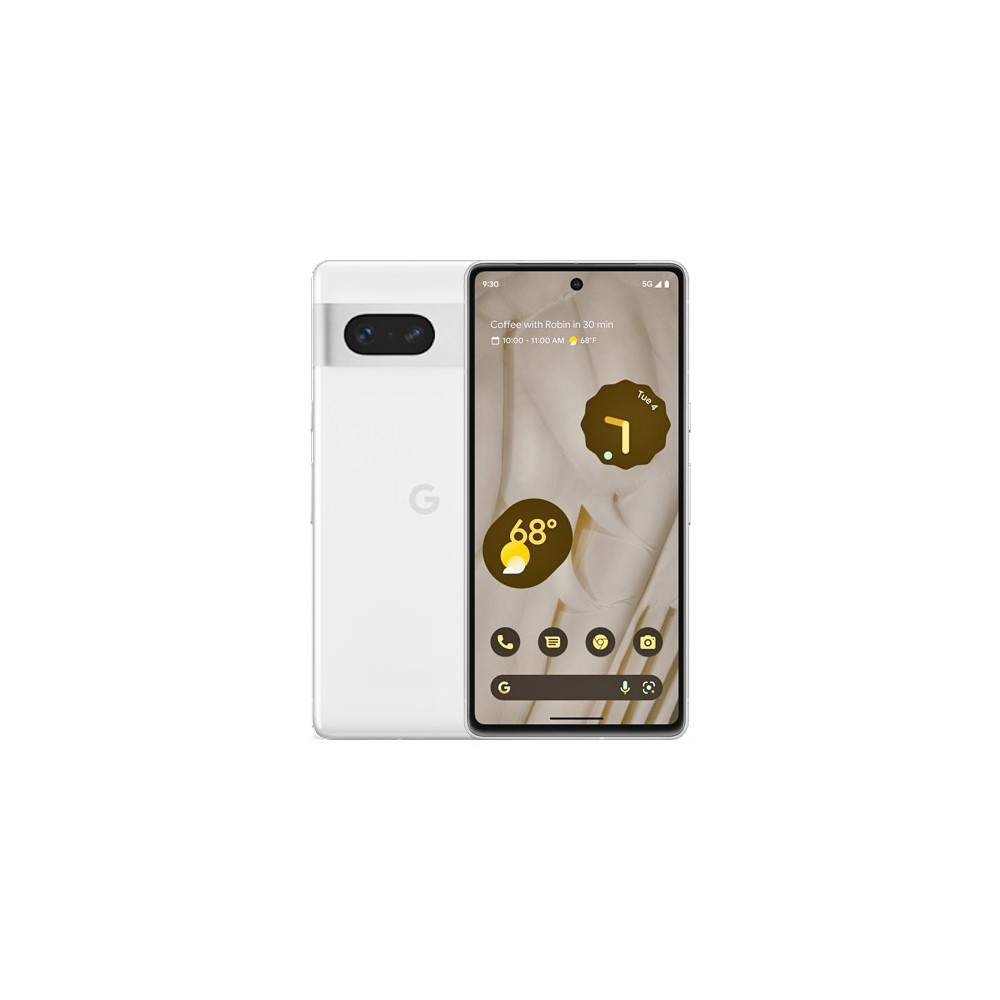

Google Pixel 7a specs
| Google Pixel 7a | |
|---|---|
Display | 6.1-inch OLED FHD+ 2,400 x 1,080 20:9 aspect ratio 90Hz refresh rate 429ppi HDR support Gorilla Glass 3 cover |
Processor | Tensor G2 Titan M2 coprocessor |
RAM | 8GB LPDDR5 |
Storage | 128GB UFS 3.1 No microSD card support |
Power | 4,385mAh battery (typical) 18W wired charging 7.5W wireless charging Battery Share not supported |
Cameras | Rear: - 64MP wide primary sensor (0.8μm, ƒ/1.89, 80-degree FoV, 1/1.73" image sensor size, Super Res Zoom up to 8x) - 13MP ultrawide (1.12μm, ƒ/2.2, 120-degree FoV) Front: - 13MP wide (1.12μm, ƒ/2.2, 95-degree FoV) |
Video | Rear: - Primary: 4K at 60/30fps, 1080p at 60/30fps - Ultrawide: 4K at 30fps, 1080p at 60/30fps Front: - Primary: 4K at 30fps, 1080p at 30fps |
Software | Pixel UI Android 13 3 Android updates 5 years of security updates |
IP rating | IP67 |
Biometrics | In-display fingerprint scanner Face unlock |
Connectivity | All countries: - Dual-SIM (1x nano-SIM + 1x eSIM) - 5G sub6 - Bluetooth 5.3 - NFC US, CA, UK, EU, AU, and JP only: - Wi-Fi 6E (802.11ax) with 2.4GHz + 5GHz + 6GHz TW, SG, and IN only: - Wi-Fi 6 (802.11ax) with 2.4GHz + 5GHz |
Network | Model GWKK3: - GSM/EDGE: Quad-band (850, 900, 1800, 1900 MHz) - UMTS/HSPA+/HSDPA: Bands 1,2,4,5,6,8,19 - LTE: Bands B1/2/3/4/5/7/8/12/13/14/17/20/25/26/28/29/30/38/40/41/48/66/71 - 5G Sub6: Bands n1/2/3/5/7/8/12/14/20/25/28/30/38/41/48/66/71/77/78 Model GHL1X: - GSM/EDGE: Quad-band (850, 900, 1800, 1900 MHz) - UMTS/HSPA+/HSDPA: Bands 1,2,4,5,6,8,19 - LTE: Bands B1/2/3/4/5/7/8/12/17/18/19/20/21/25/28/32/38/39/40/41//42/66 - 5G Sub6: Bands n1/2/3/5/7/8/12/20/25/28/38/40/41/66/75/76/77/78/79 Model G0DZQ: - GSM/EDGE: Quad-band (850, 900, 1800, 1900 MHz) - UMTS/HSPA+/HSDPA: Bands 1,2,4,5,6,8,19 - LTE: Bands B1/2/3/4/5/7/8/12/13/14/17/20/25/26/28/29/30/38/40/41/48/66/71 - 5G Sub6: Bands n1/2/3/5/7/8/12/14/20/25/28/30/38/41/48/66/71/77/78 - 5G mmWave: Bands n260/n261 Model G82U8: - GSM/EDGE: Quad-band (850, 900, 1800, 1900 MHz) - UMTS/HSPA+/HSDPA: Bands 1,2,4,5,6,8,19 - LTE: Bands B1/2/3/4/5/7/8/12/17/18/19/20/21/25/28/32/38/39/40/41//42/66 - 5G Sub6: Bands n1/2/3/5/7/8/12/20/25/28/38/40/41/66/75/76/77/78/79 |
Ports | USB-C 3.2 Gen 2 Single nano-SIM |
Dimensions | 152 x 72.9 x 9mm |
Weight | 194g |
Materials | Plastic back Gorilla Glass 3 front Aluminum alloy frame/visor |
Colors | Charcoal, Sea, Snow (All countries and retailers) Coral (Select countries and retailers) |
In the box | USB-C to USB-C cable (USB 2.0, 1m) Quick Switch Adapter Support Card SIM tool |
The Pixel 7a is a mid-range smartphone, so most of its specifications are modest. If you’re expecting big numbers and flashy marketing names for truckloads of features, you might want to keep your expectations in check. The Pixel A series has always prioritized practical experiences over pure specifications, and the status quo doesn’t change with the Pixel 7a.
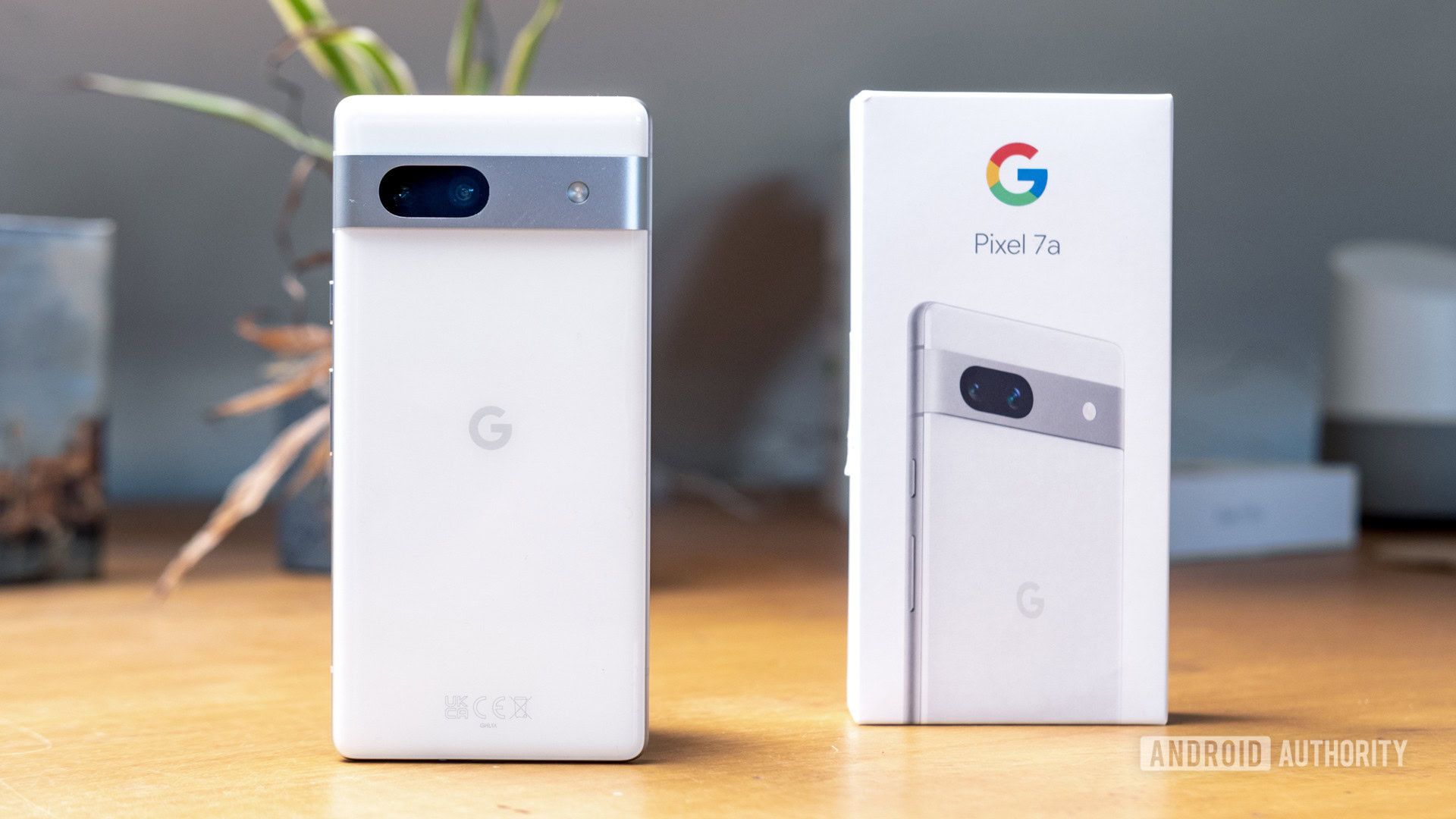
The Pixel 7a’s biggest upgrades over last year’s model include a higher refresh rate display, upgraded camera hardware, Google’s newer Tensor G2 chip, and the addition of 7.5W wireless charging. There are also new Sea and Coral colors for the phone, with the latter only available via the Google Store for now.
The rest of the Pixel 7a is very similar to the Pixel 6a. Of course, there is a new design on board, marking the A-series closer to the mainline, flagship Pixel series. The rear camera visor emulates the metallic visor from the Pixel 7 and Pixel 7 Pro. However, for its build materials, the Pixel 7a has an aluminum midframe and visor with a polycarbonate back. We didn’t find the use of plastic offensive as it’s a mid-range smartphone after all.


Google Pixel 7a specs vs Google Pixel 6a specs
| Google Pixel 7a | Google Pixel 6a | |
|---|---|---|
Display | Google Pixel 7a 6.1-inch OLED FHD+ resolution (2,400 x 1,080) 20:9 aspect ratio 90Hz refresh rate HDR support Gorilla Glass 3 | Google Pixel 6a 6.1-inch OLED FHD+ resolution (2,400 x 1,080) 20:9 aspect ratio 60Hz refresh rate HDR support Gorilla Glass 3 |
Processor | Google Pixel 7a Google Tensor G2 | Google Pixel 6a Google Tensor |
GPU | Google Pixel 7a Arm Mali-G710 | Google Pixel 6a Arm Mali-G78 MP20 |
RAM | Google Pixel 7a 8GB LPDDR5 | Google Pixel 6a 6GB LPDDR5 |
Storage | Google Pixel 7a 128GB UFS 3.1 | Google Pixel 6a 128GB UFS 3.1 |
Battery and charging | Google Pixel 7a 4,385mAh battery 18W wired charging 7.5W wireless charging No charger in the box | Google Pixel 6a 4,410mAh battery 18W wired charging No wireless charging No charger in the box |
Cameras | Google Pixel 7a Rear: - 64MP main Sony IMX787 0.8μm, ƒ/1.89, 82-degree FoV, 1/1.73-inch, OIS/EIS Super Res Zoom up to 8x - 13MP ultrawide Sony IMX712 1.12μm, ƒ/2.2, 120-degree FoV Front: - 13MP Sony IMX355 1.12μm, ƒ/2.2, fixed focus, 95-degree FoV | Google Pixel 6a Rear: - 12.2MP main Sony IMX363 1.4μm, ƒ/1.7, 77-degree FoV, 1/2.55-inch, OIS/EIS - 12MP ultrawide Sony IMX386 1.25μm, ƒ/2.2, 114-degree FoV Front: - 8MP Sony IMX355 1.12μm, ƒ/2.0, fixed focus, 84-degree FoV |
Video | Google Pixel 7a Rear: 4K at 30/60FPS 1080p at 30/60FPS Front: 4K at 30FPS | Google Pixel 6a Rear: 4K at 30/60FPS 1080p at 30/60FPS Front: 1080p at 30FPS |
Audio | Google Pixel 7a Stereo speakers Dual mics No 3.5mm port | Google Pixel 6a Stereo speakers Dual mics No 3.5mm port |
Security | Google Pixel 7a In-display fingerprint Titan M2 chip 5 years' security updates | Google Pixel 6a In-display fingerprint Titan M2 chip 5 years' security updates |
Sensors | Google Pixel 7a Proximity sensor Ambient light sensor Accelerometer Gyrometer Magnetometer Barometer | Google Pixel 6a Proximity sensor Ambient light sensor Accelerometer Gyrometer Magnetometer Barometer |
Water resistance | Google Pixel 7a IP67 | Google Pixel 6a IP67 |
Connectivity | Google Pixel 7a Wi-Fi 6 (802.11ax) Wi-Fi 6E (6GHz) in the US Bluetooth 5.3 NFC support Dual SIM (single nano-SIM and eSIM) Google Cast GPS, GLONASS, Galileo, QZSS, BeiDou | Google Pixel 6a Wi-Fi 6 (802.11ax) Wi-Fi 6E (6GHz) in the US Bluetooth 5.2 NFC support Dual SIM (single nano-SIM and eSIM) Google Cast GPS, GLONASS, Galileo, QZSS, BeiDou |
Software | Google Pixel 7a Android 13 with Pixel UI | Google Pixel 6a Android 12 with Pixel UI Upgradeable to Android 13 |
Materials | Google Pixel 7a Gorilla Glass 3 on the front Aluminum frame Polycarbonate back | Google Pixel 6a Gorilla Glass 3 on the front Aluminum frame Polycarbonate back |
Dimensions and weight | Google Pixel 7a 152.4 x 72.9 x 9.0mm 193g | Google Pixel 6a 152.2 x 71.8 x 8.9mm 178g |
Colors | Google Pixel 7a Arctic Blue, Chalk, Charcoal, Coral | Google Pixel 6a Sage, Chalk, Charcoal |
If you compare the last-generation Pixel 6a with the Pixel 7a, you will notice that Google largely maintains its Pixel A philosophy. The Pixel 7a is a mere evolution over the Pixel 6a, one that increases the headroom for Google for better experiences. It changes a few things around without looking to reinvent what’s not broken. Like the mainline Pixel 7 series smartphones, the latest A-series device sports a metallic camera bar on the rear as opposed to last year’s glass visor.
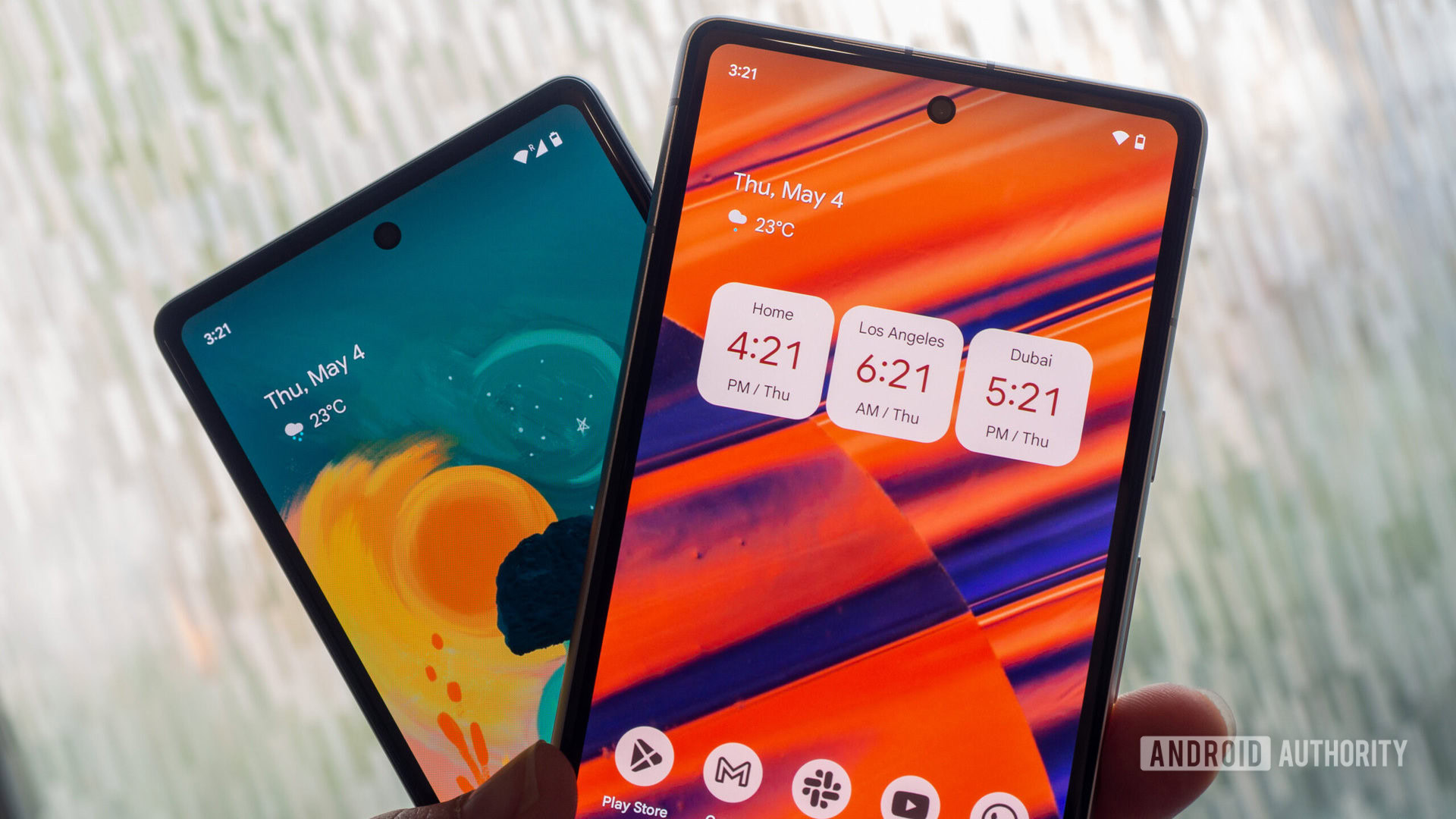
Starting with the display, the Pixel 7a has the same 6.1-inch 1080p display as its predecessor. If you loved the smaller screen size of the Pixel 6a, you’ll continue to appreciate it on the Pixel 7a as well. What has changed is the maximum refresh rate, jumping from 60Hz on the Pixel 6a to 90Hz on the Pixel 7a. This is something that everyone will appreciate, as the jump to 90Hz refresh is one of the most noticeable markers of improved smoothness.
The next big upgrade for the Pixel 7a over the Pixel 6a is the camera. Both the primary rear camera and the rear ultrawide camera receive hardware upgrades, marking a significant step up.
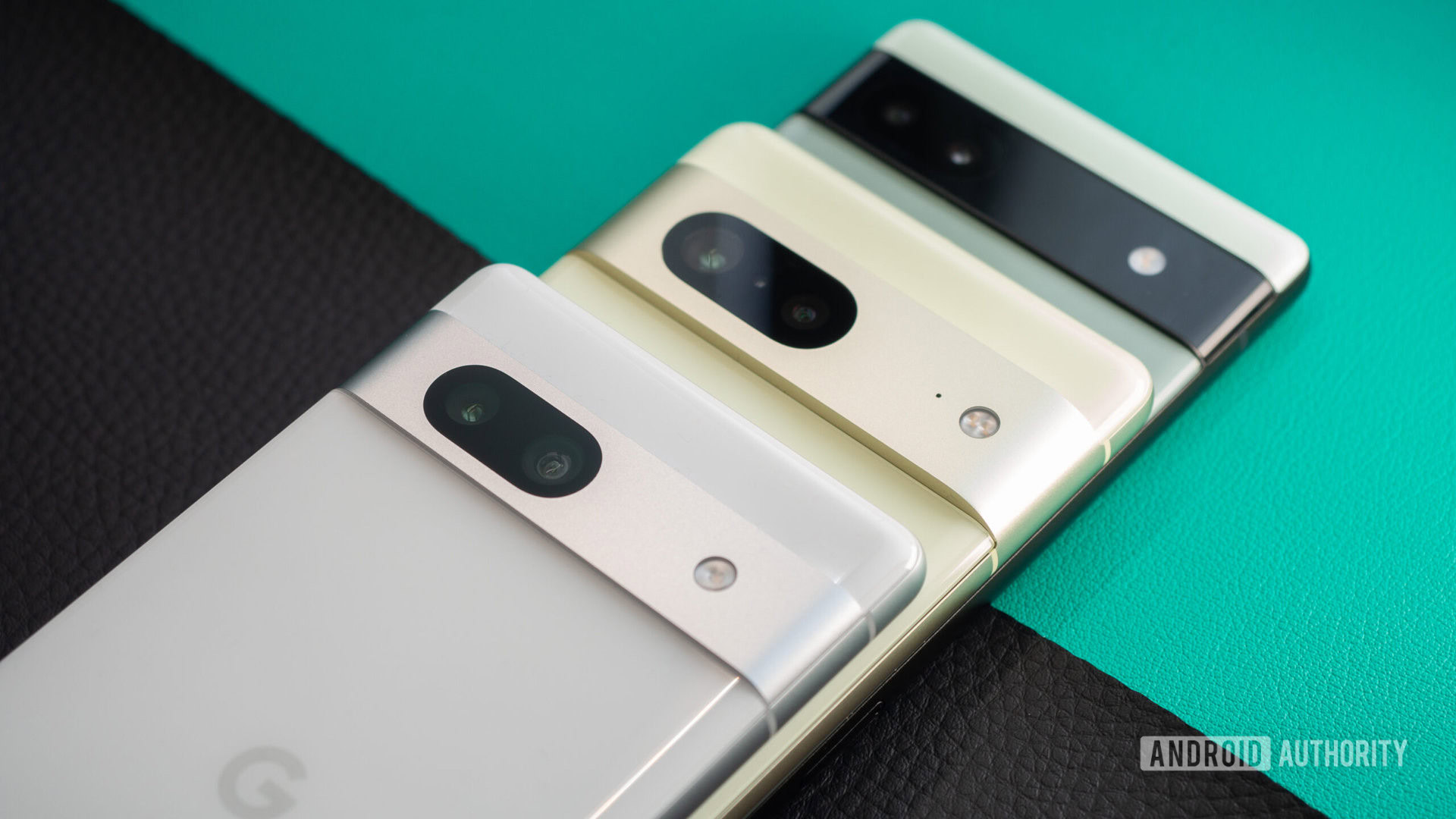
The Pixel 6a’s cameras already had a pretty good lead over the competition last year. In fact, it’s still one of the best camera phones for its price tag. However, a very big portion of this achievement is credited to Google’s computational photography algorithms. The actual underlying camera hardware was very dated. For instance, the 12.2MP Sony IMX363 that serves as the main primary camera was first used by Google in the Pixel 3 back in 2018! So in this age of massive camera sensors and super high megapixel counts, the Pixel 7a’s upgrade is modest but desperately welcome nonetheless.
The Pixel 7a comes with the 64MP Sony IMX787 for the primary camera and the 13MP Sony IMX712 for the ultrawide camera. Google’s camera algorithms continue to shine on the device, so we get excellent performance from the phone right now, as well as plenty of room to improve in the future. The front camera is also bumped up to 13MP. All three cameras on the phone support 4K 30fps video recording. To add to the hardware, you also get trademark Pixel-exclusive features like Photo Unblur, Magic Eraser, and Night Sight.
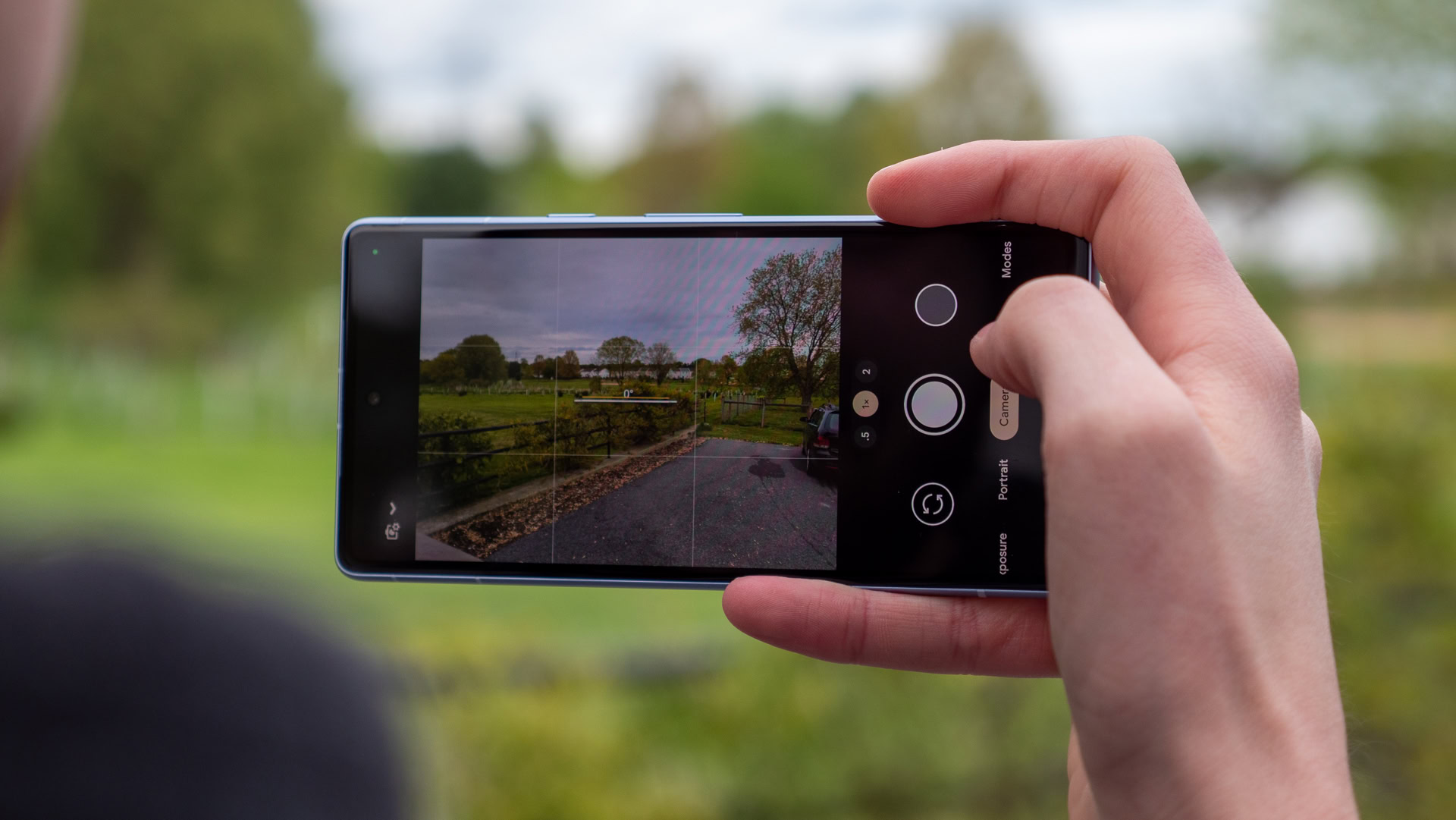
Moving on to the next change, the Pixel 7a’s Tensor G2 SoC is a step up from the Pixel 6a’s first-gen Tensor. Comparing the first-generation Tensor to the second-generation Tensor G2, the latter offers similar CPU performance, better GPU performance for gaming, lower heat generation, slightly better modem performance, and finally, significantly improved TPU performance for AI-related functions. The stand out is AI performance — so if your daily usage involves taking a lot of pictures, you will likely notice a difference.
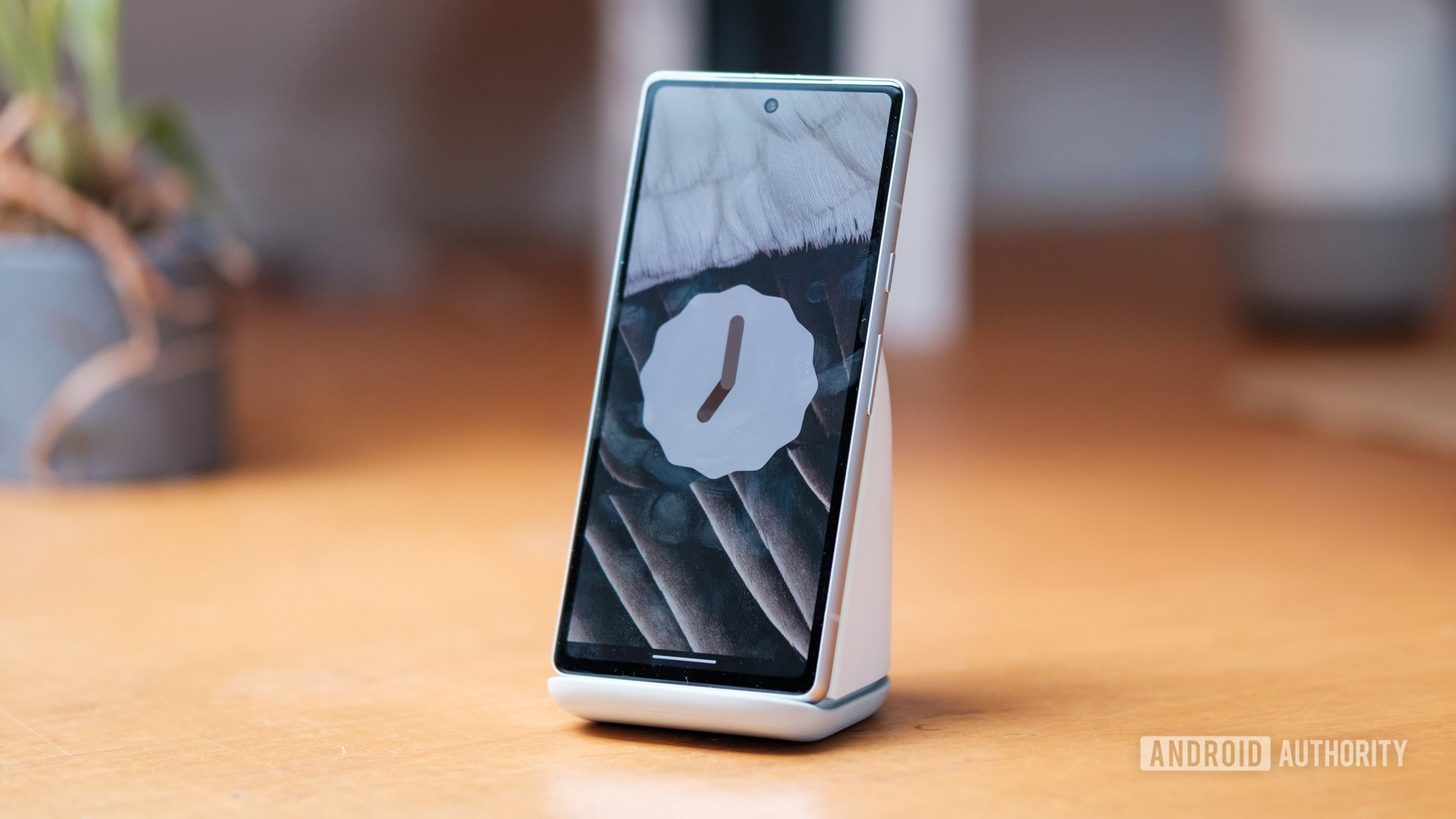
The Pixel 7a also brings wireless charging capabilities to the Pixel A series. At 7.5W, it’s definitely not the fastest wireless charging we’ve seen on a smartphone, and you certainly can’t bank on it for a quick top-up. Moreover, Google hasn’t improved wired charging speeds whatsoever. In our Pixel 7a charging test, we found that the phone takes over two hours to fully charge up. That’s much slower than rival phones, even at this budget price point.
Regardless, wireless charging is a good feature to have for users who like to charge their phones overnight. There’s no reverse wireless charging support, though. There is no charger included in the box either, so you will have to buy a charging brick and a wireless charger separately.
And finally, the Pixel 7a gets two new colors. The Pixel 6a had adopted the Sage Green colorway as its highlight color of the year. For Pixel 7a, Google has the Sea color as the highlight and the Coral color as the Google Store exclusive. If you prefer muted tones, there are still the Charcoal and Snow colors.
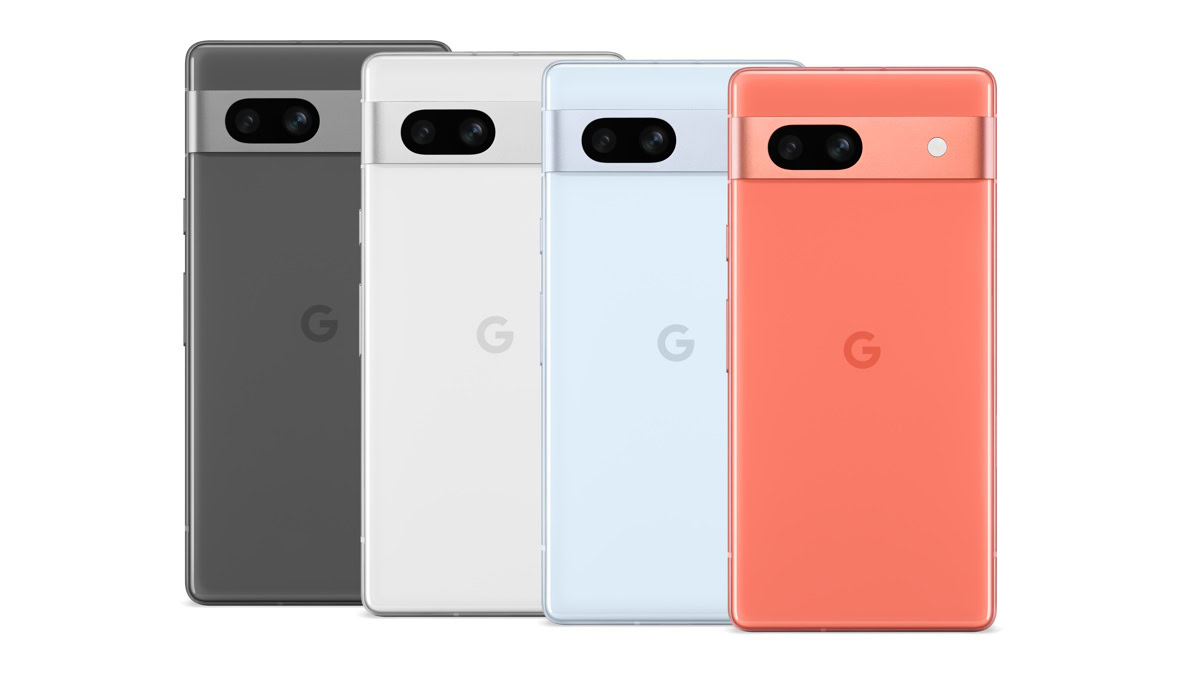
Confused between the two phones? We take an even deeper dive between the two phones in our Pixel 6a vs Pixel 7a comparison.
Google Pixel 7a specs vs Google Pixel 7 and 7 Pro specs
| Google Pixel 7a | Google Pixel 7 | Google Pixel 7 Pro | |
|---|---|---|---|
Display | Google Pixel 7a 6.1-inch OLED FHD+ resolution (2,400 x 1,080) 20:9 aspect ratio 90Hz HDR support | Google Pixel 7 6.32-inch OLED FHD+ resolution (2,400 x 1,080) 20:9 aspect ratio 90Hz HDR support | Google Pixel 7 Pro 6.7-inch pOLED QHD+ resolution (3,120 x 1,440) 20:9 aspect ratio 120Hz HDR support |
Processor | Google Pixel 7a Google Tensor G2 | Google Pixel 7 Google Tensor G2 | Google Pixel 7 Pro Google Tensor G2 |
GPU | Google Pixel 7a Arm Mali-G710 | Google Pixel 7 Arm Mali-G710 | Google Pixel 7 Pro Arm Mali-G710 |
RAM | Google Pixel 7a 8GB LPDDR5 | Google Pixel 7 8GB LPDDR5 | Google Pixel 7 Pro 12GB LPDDR5 |
Storage | Google Pixel 7a 128GB UFS 3.1 | Google Pixel 7 128/256GB UFS 3.1 | Google Pixel 7 Pro 128/256GB UFS 3.1 |
Battery and charging | Google Pixel 7a 4,385mAh battery 18W wired charging 7.5W wireless charging No charger in the box Does not support reverse wireless charging | Google Pixel 7 4,355mAh battery 30W wired charging 15W wireless charging No charger in the box Supports reverse wireless charging | Google Pixel 7 Pro 5,003mAh battery 30W wired charging 15W wireless charging No charger in the box Supports reverse wireless charging |
Cameras | Google Pixel 7a Rear: - 64MP main Sony IMX787 0.8μm, ƒ/1.89, 82-degree FoV 1/1.73-inch sensor OIS and EIS - 13MP ultrawide Sony IMX712 1.12μm, ƒ/2.2, 120-degree FoV Front: - 13MP Sony IMX355 1.12μm, ƒ/2.2, 95-degree FoV | Google Pixel 7 Rear: - 50MP main Samsung ISOCELL GN1 1.2 μm, ƒ/1.85, 82-degree FoV 1/1.31-inch sensor OIS and EIS - 12MP ultrawide Samsung ISOCELL GM1 1.25 μm, ƒ/2.2, 114-degree FoV - Laser AF Front: - 10.8MP 1.22 μm, ƒ/2.2, 92.8-degree FoV | Google Pixel 7 Pro Rear: - 50MP main Samsung ISOCELL GN1 1.2 μm, ƒ/1.85, 82-degree FoV 1/1.31-inch sensor OIS and EIS - 12MP ultrawide Samsung ISOCELL GM1 1.25 μm, ƒ/2.2, 125.8-degree FoV, autofocus - 48MP telephoto 0.7 μm, ƒ/3.5, 20.6-degree FoV OIS 5x optical zoom, 30x Super Resolution - Laser AF Front: - 10.8MP 1.22 μm, ƒ/2.2, 92.8-degree FoV |
Video | Google Pixel 7a Rear: 4K at 30/60FPS 1080p at 30/60FPS Front: 4K at 30FPS 1080p at 30FPS | Google Pixel 7 Rear: 4K at 30/60FPS 1080p at 30/60FPS Front: 4K at 30FPS 1080p at 30FPS | Google Pixel 7 Pro Rear: 4K at 30/60FPS 1080p at 30/60FPS Front: 4K at 30FPS 1080p at 30FPS |
Audio | Google Pixel 7a Stereo speakers Dual mics No 3.5mm port | Google Pixel 7 Stereo speakers Triple mics No 3.5mm port | Google Pixel 7 Pro Stereo speakers Triple mics No 3.5mm port |
Security | Google Pixel 7a In-display fingerprint Titan M2 chip 5 years security updates | Google Pixel 7 In-display fingerprint Titan M2 chip 5 years security updates | Google Pixel 7 Pro In-display fingerprint Titan M2 chip 5 years security updates |
Sensors | Google Pixel 7a Proximity sensor Ambient light sensor Accelerometer Gyrometer Magnetometer Barometer | Google Pixel 7 Proximity sensor Ambient light sensor Accelerometer Gyrometer Magnetometer Barometer | Google Pixel 7 Pro Proximity sensor Ambient light sensor Accelerometer Gyrometer Magnetometer Barometer |
Water resistance | Google Pixel 7a IP67 | Google Pixel 7 IP68 | Google Pixel 7 Pro IP68 |
Connectivity | Google Pixel 7a Wi-Fi 6 (802.11ax) Wi-Fi 6E (6GHz) in the US Bluetooth 5.2 NFC support Dual SIM (single nano-SIM and eSIM) Google Cast GPS, GLONASS, Galileo, QZSS, BeiDou | Google Pixel 7 Wi-Fi 6 (802.11ax) Wi-Fi 6E (802.11ax) in the US Bluetooth 5.2 NFC support Dual SIM (single nano-SIM and eSIM) Google Cast GPS, GLONASS, Galileo, QZSS, BeiDou | Google Pixel 7 Pro Wi-Fi 6 (802.11ax) Wi-Fi 6E (802.11ax) in the US Bluetooth 5.2 NFC support Dual SIM (single nano-SIM and eSIM) Google Cast GPS, GLONASS, Galileo, QZSS, BeiDou |
Software | Google Pixel 7a Android 13 with Pixel UI | Google Pixel 7 Android 13 with Pixel UI | Google Pixel 7 Pro Android 13 with Pixel UI |
Materials | Google Pixel 7a Gorilla Glass 3 on the front Aluminum frame Polycarbonate back | Google Pixel 7 Gorilla Glass Victus on the front and back Aluminum frame | Google Pixel 7 Pro Gorilla Glass Victus on the front and back Aluminum frame |
Dimensions and weight | Google Pixel 7a 152.4 x 72.9 x 9.0mm 193g | Google Pixel 7 155.6 x 73.2 x 8.7mm 196 grams | Google Pixel 7 Pro 162.9 x 76.55 x 8.9mm 212g |
Colors | Google Pixel 7a Arctic Blue, Chalk, Charcoal, Coral | Google Pixel 7 Obsidian, Snow, Lemongrass | Google Pixel 7 Pro Obsidian, Snow, Hazel |
The spec table above should give you a good idea of how the Pixel 7 series is placed. Naturally, the series begins with the Pixel 7a capturing the budget/mid-range price segments, with the Pixel 7 sitting at a price band above and the Pixel 7 Pro remaining the flagship from Google. We also have the Pixel Fold coming along later in 2023 to take the top position.
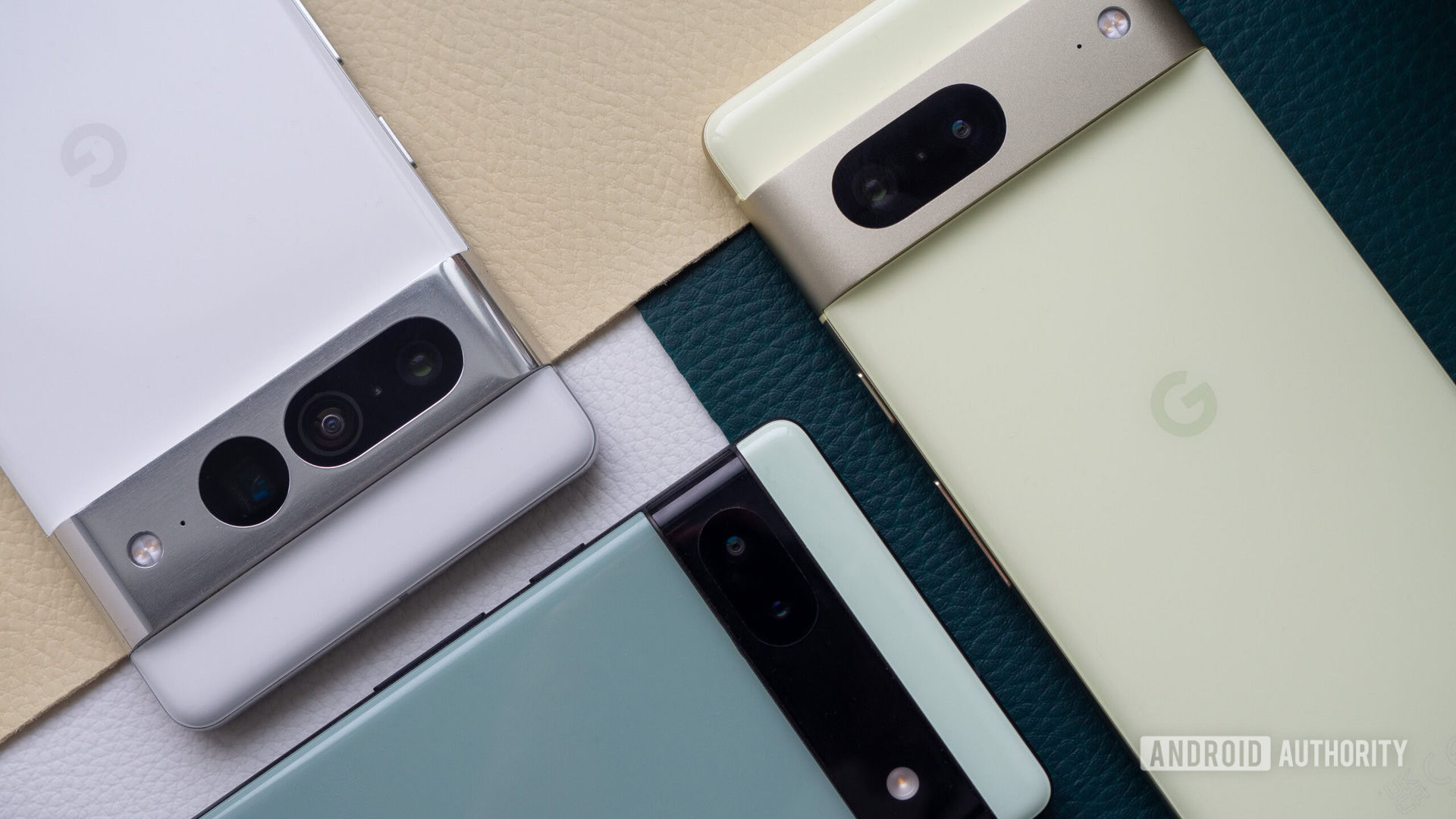
There’s one thing to note, though. All three phones have the Tensor G2 flagship SoC. So with this, you will get a consistent flagship-like experience across the price-tiers from the Pixel 7 series. All three phones also run Pixel UI with similar features, and all of them are eligible for Android updates on day 1.
The differences in the lineup will hinge on the basis of display size and technology, build materials, battery size, charging tech, and of course, the cameras. With these three phones in the portfolio, Google covers a wide variety of price points.
We encourage you to check out our in-depth Pixel 7a vs Pixel 7 comparison to learn about all the differences between the two phones.

Solid performance and plenty of RAM
Improved 90Hz display
Google Pixel 7a vs the competition: How does it compare?
The Pixel 7a doesn’t exactly stand out from other smartphones if you look at the spec sheet alone, even in its price class. So if you compare it against the competition with a narrow vision, you’d find other smartphones have the advantage. It’s only when you factor in the experience of owning a Google Pixel would you realize that the A-series Pixel makes a whole lot of sense. And even though the Pixel 7a’s price has increased to $499, it remains an affordable option compared to some of its competitors.
Pixel 7
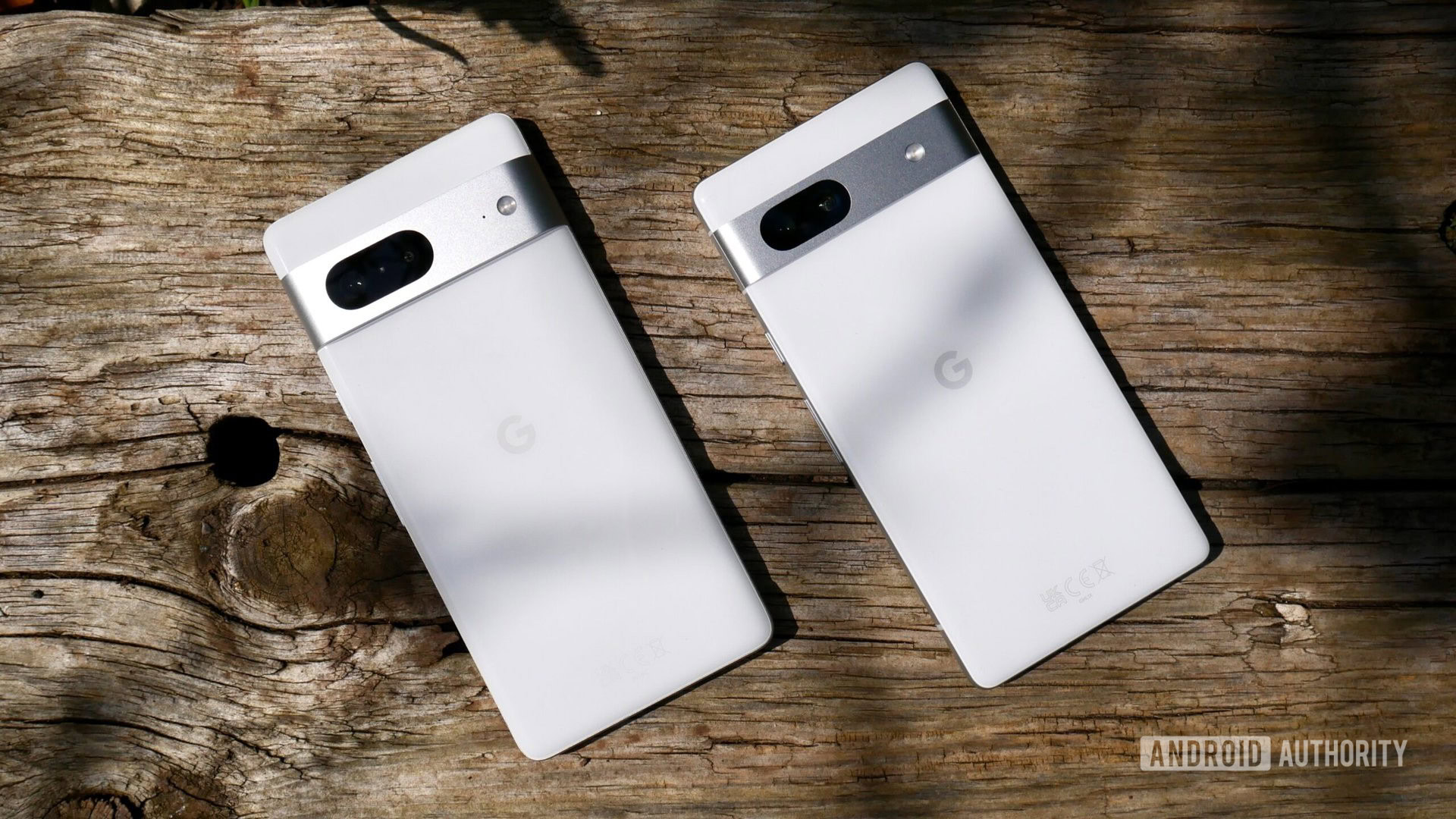
Talking about the competition against the Pixel 7a, the first and foremost rival comes from Google itself in the form of the Pixel 7. The Pixel 7 does just about everything that the Pixel 7a does — and it can do even more.
This is an issue for Google in pitching the new phone to potential buyers. The Pixel 7a is priced at $499, which is only $100 less than the Pixel 7. Add in the fact that the latter is often now discounted to $500 or less, and it’s hard to see why anything other than the novelty of it being the latest device will draw people to the Pixel 7a. On the flip side, though, the Pixel 6a saw big discounts early on too, so those with patience may want to hold out and try and pick up the Pixel 7a for under $400.
OnePlus 10T
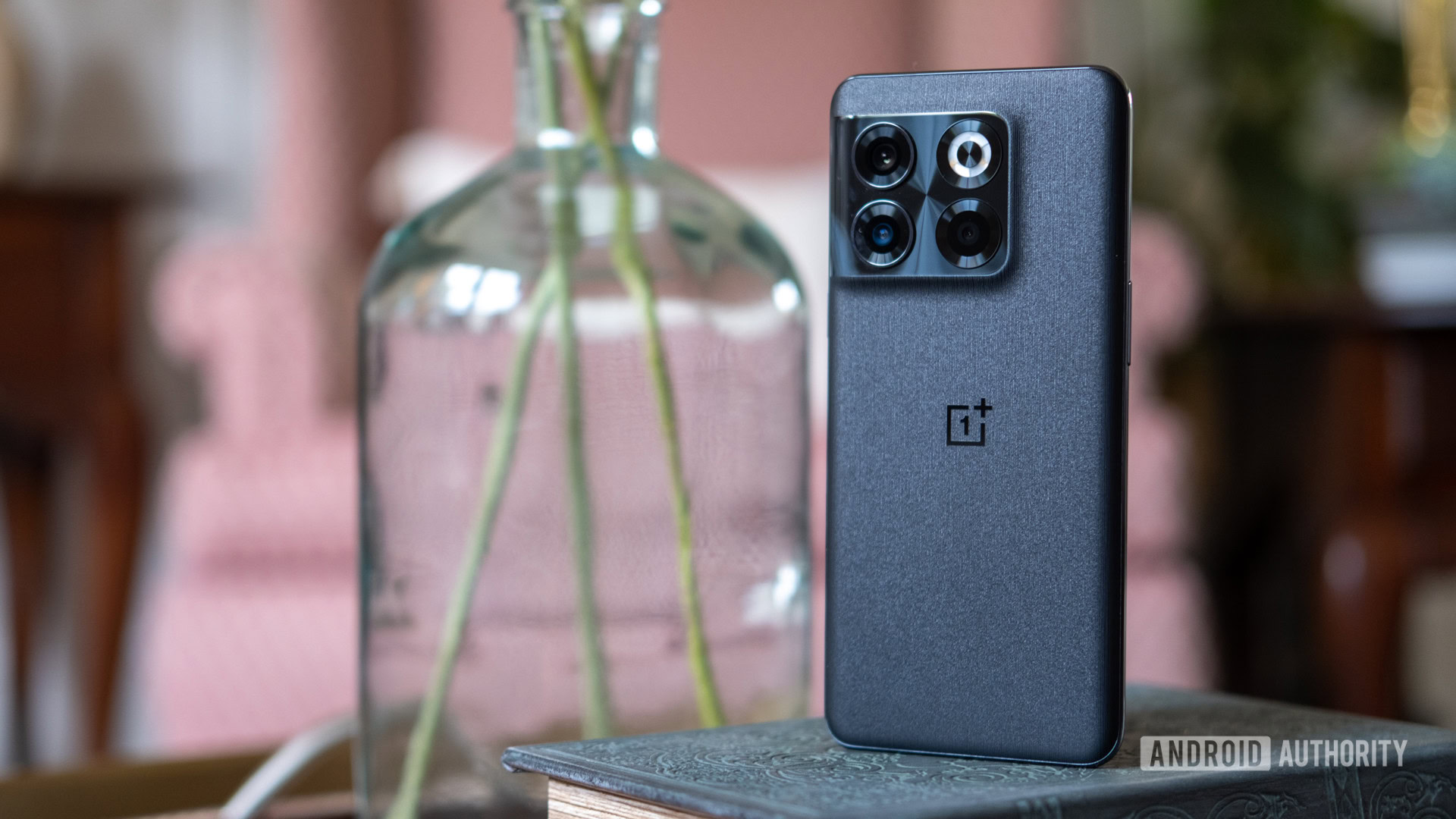
If you aren’t particularly married to the idea of a Google Pixel smartphone, then OnePlus has a phone for you. The OnePlus 10T is a rather underrated flagship smartphone. With OnePlus frequently discounting the phone to under $500, it competes very strongly against the Pixel 7a. If you’re a gamer, the OnePlus 10T is a definite recommendation against any Pixel smartphone, as the Snapdragon 8 Gen 1 Plus SoC is efficient and quite good for gaming.
You also get a bigger and better display, a bigger battery, and a phone that charges at a crazy 125W. The cameras are a downgrade from the Pixel 7a, though. For people valuing unbridled performance, the OnePlus 10T is the way to go.
Samsung Galaxy A54 5G
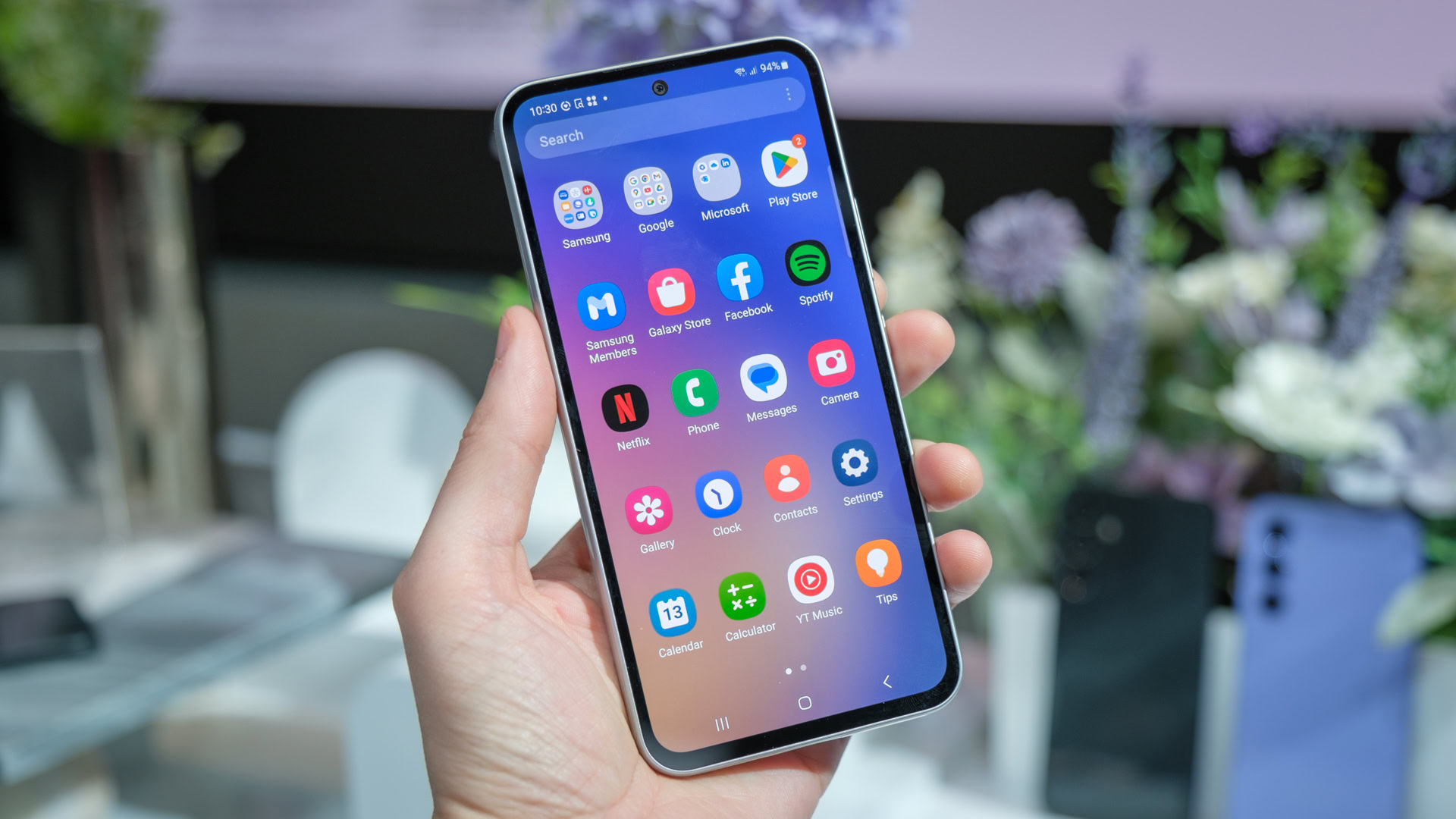
If you want a Samsung phone, the Samsung Galaxy A54 5G will set you back $449 in the US. For this price, you get a good and consistent mid-range Samsung smartphone. The Galaxy A54 has a higher 120Hz refresh rate for its large 6.4-inch display, a larger 5,000mAh battery with 25W fast charging support, and a better 32MP selfie camera.
The primary rear camera is a 50MP sensor, flanked by a 12MP ultrawide and a 5MP macro camera. We’re inclined to call the rear camera a sidegrade compared to what the Pixel 7a ships with. Moreover, the Tensor G2 is significantly more powerful than the A54’s Exynos 1380. However, the Galaxy does have microSD card support up to 1TB, which could help sway your decision.
Motorola Edge (2022)
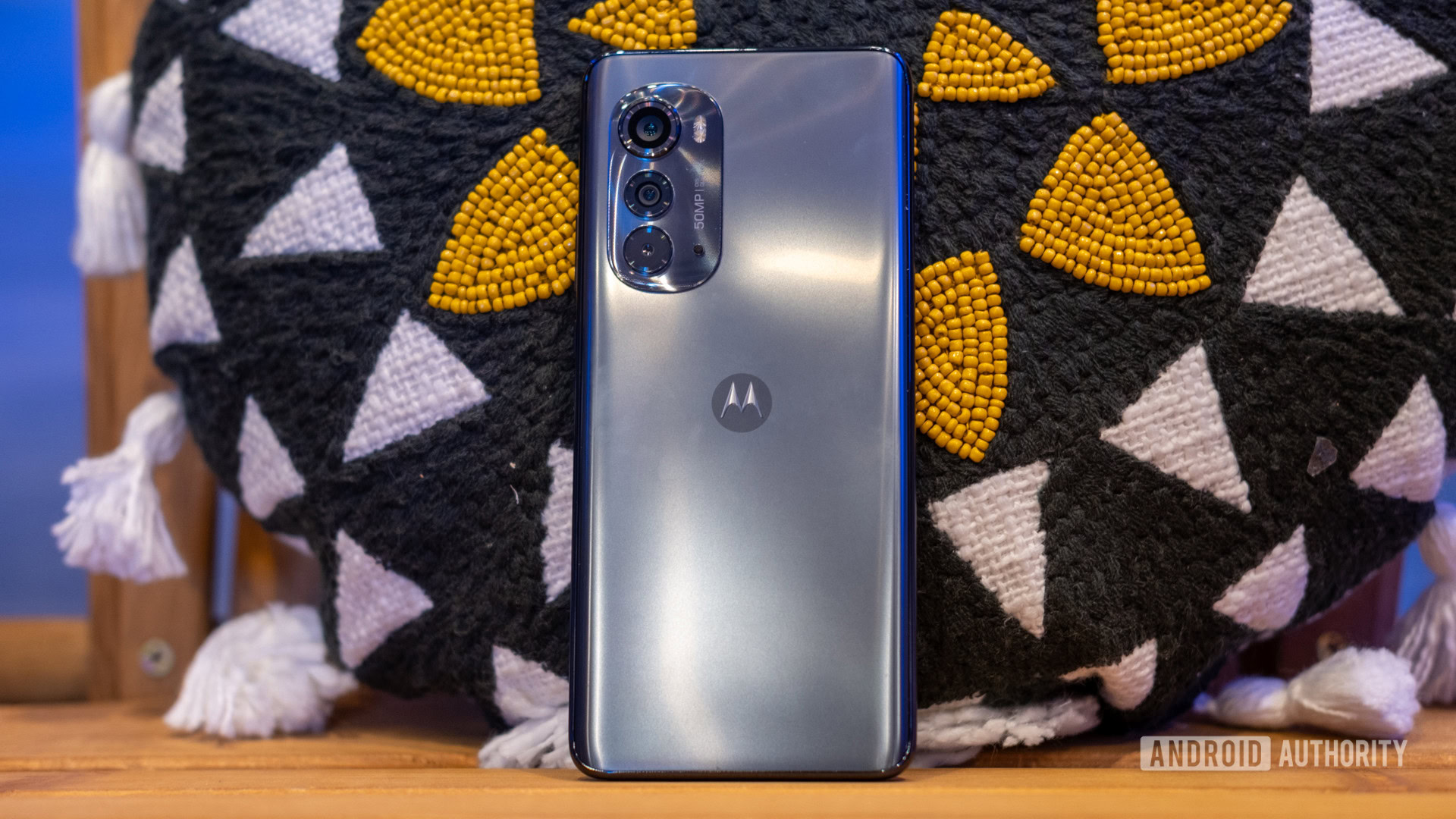
If you aren’t looking to spend over $350 but still want a great phone that can compete against the Pixel 7a, the discounted price of $349 for the Motorola Edge (2022) makes it a very strong contender.
The Motorola Edge (2022) has a significantly better display, with a 144Hz refresh rate and HDR10+ support. The Dimensity 1050 is not a flagship SoC, but it will be enough for most users. The cameras are a bit of a letdown when you compare them to the legacy of the Pixels. But give the Motorola Edge enough light, and you’ll still get some great shots for social media use. The phone also has a bigger 5,000mAh battery, faster 30W wired charging, and actually usable 15W wireless charging with reverse wireless charging support.
Motorola does lag behind Google on its update promise support. It also has just an IP52 rating, compared to the IP67 rating on the Pixel 7a.
Apple iPhone SE (2022)
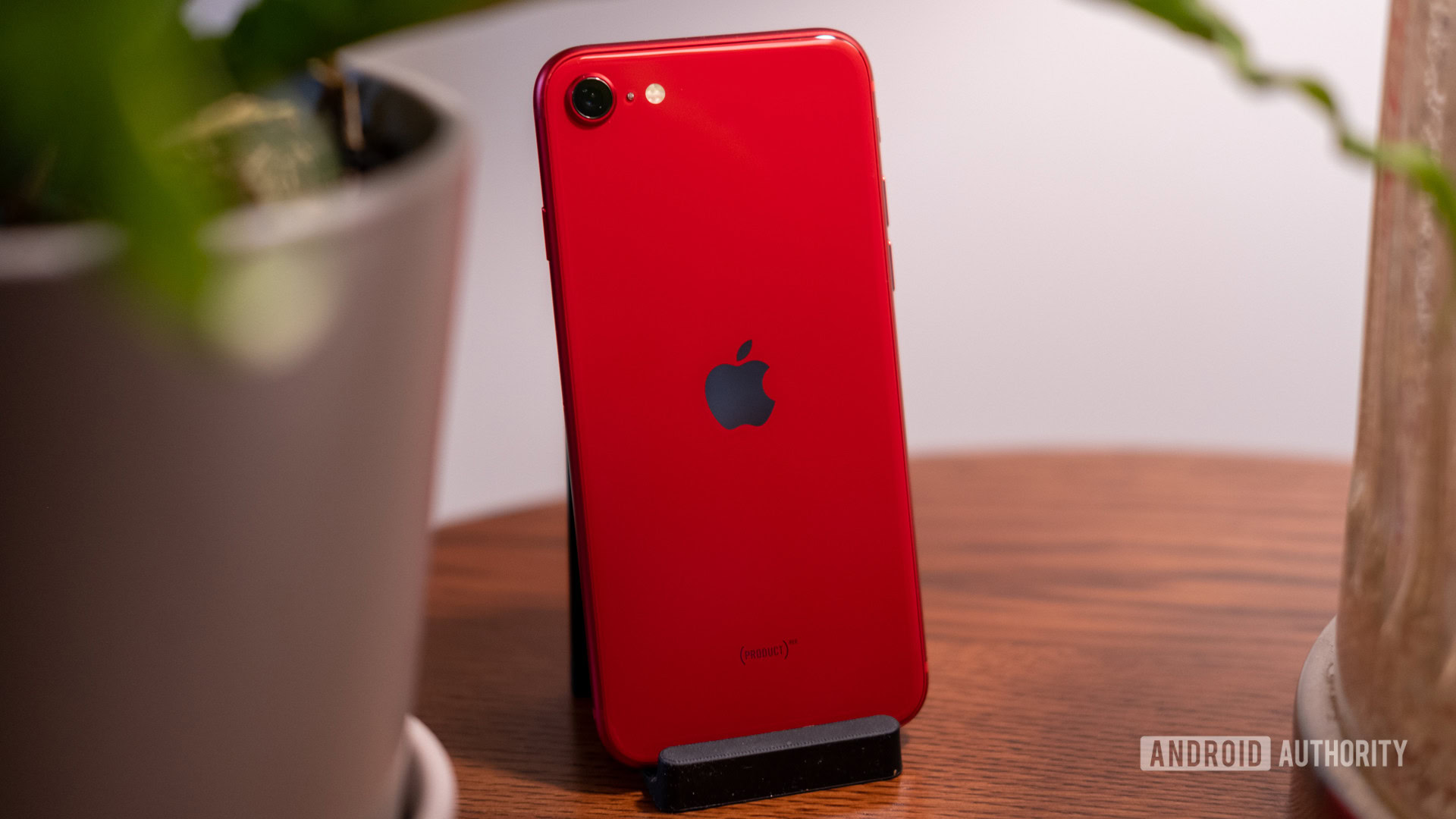
If you really value the phone experience over specifications and do not mind jumping over to the other side, Apple wants to convince you that the grass is greener with the iPhone SE (2022). The iPhone SE has the dated “iPhone 8” look, but it packs a strong punch under the hood with the powerful A15 Bionic processor. It’s the same chip that is used on the iPhone 14 as well, and it’s one of the best phone chips around. Apple also has an impeccable record with software support, so you can hold your phone for years without worry.
There are some fairly obvious compromises with the iPhone SE (2022). The base variant has just 64GB of storage, and we’d recommend most people go for the 128GB storage variant that comes in at $479. The rear camera on the phone is very old, but Apple manages to get good results thanks to computational photography magic. We’re also not particular fans of the display, as you can get significantly better displays on other phones these days.
Overall, the iPhone SE (2022) holds out since the Apple ecosystem experience is unparalleled, and the iPhone is at the center of it. If you want a phone that speaks beyond the spec sheet, the iPhone SE (2022) is worth a glance at least.
FAQs
The Google Pixel 7a supports 7.5W wireless charging. However, there is no reverse wireless charging.
The Pixel 7a is water-resistant and not waterproof. It has an IP67 rating for 30 minutes of water immersion up to 1-meter depth.
No, the Pixel 7a does not have a headphone jack.
Yes, the Pixel 7a supports eSIM.
The Pixel 7a supports dual-SIM through the use of one nano-SIM and one eSIM.
The Pixel 7a is 152.4 x 72.9 x 9.0mm in size.
The Pixel 7a retains the 6.1-inch display from the Pixel 6a, but upgrades the refresh rate to 90Hz.

